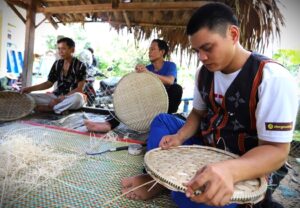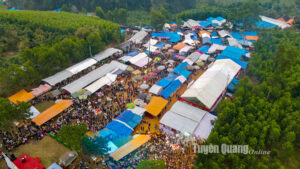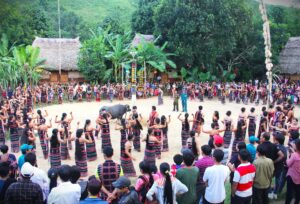Tay Yen Tu Spiritual and Ecological Tourist Area
Coming to Bac Giang, one of the tourist destinations that cannot be missed is Tay Yen Tu Spiritual and Ecological Tourist Area. This is the final destination in the journey of the Spiritual Tour following the Buddhist propagation route of King Tran Nhan Tong and his disciples through the pagodas and towers along the western slopes of Yen Tu mountain range.
Tay Yen Tu Spiritual – Ecological Tourist Area is located in Tay Yen Tu town, Son Dong district, Bac Giang province, about 140km northeast of Hanoi. From Hanoi, you travel along the Hanoi – Bac Giang highway, turn right at the intersection of Bac Giang city onto PR293 – Tay Yen Tu road (also known as the spiritual road), follow the signs for about 70km to reach the Tourist Area.
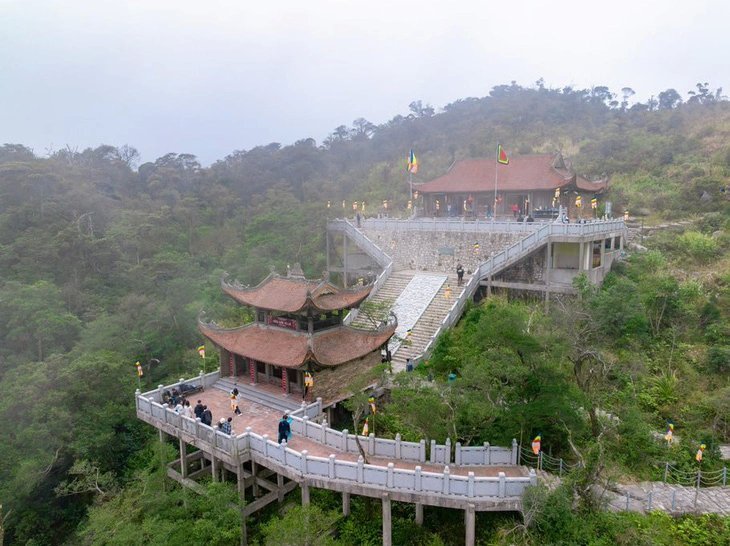
When talking about Tay Yen Tu, we must mention the Truc Lam Zen sect. Truc Lam Zen sect is a Zen sect with pure Vietnamese philosophy, founded by Buddha King Tran Nhan Tong in the 13th century. Truc Lam Zen sect is the soul of the sacred Yen Tu mountain system, it has become the pride of every Vietnamese person. Pilgrimage to Tay Yen Tu, visitors can both admire the famous religious relic and feel the peaceful, poetic beauty of Bac Giang land. Yen Tu mountain is located on the Dong Trieu arc embracing the northeastern region of Vietnam. The eastern slope mainly belongs to Quang Ninh province, the western slope belongs to Son Dong, Luc Ngan, Luc Nam and Yen Dung districts of Bac Giang province. Currently, the Tay Yen Tu area still retains many relics and historical-cultural works related to religion, associated with the process of building and defending the country of our people, especially during the Ly-Tran dynasties. With a system of pagodas, towers, historical-cultural relics and the majesty of the mountains and forests, rich flora and fauna, Yen Tu has great potential. Together with Dong Yen Tu of Quang Ninh, Tay Yen Tu of Bac Giang is coordinated and connected to form a unified Yen Tu scenic complex, creating conditions for tourism development and promoting the cultural heritages left by our ancestors.
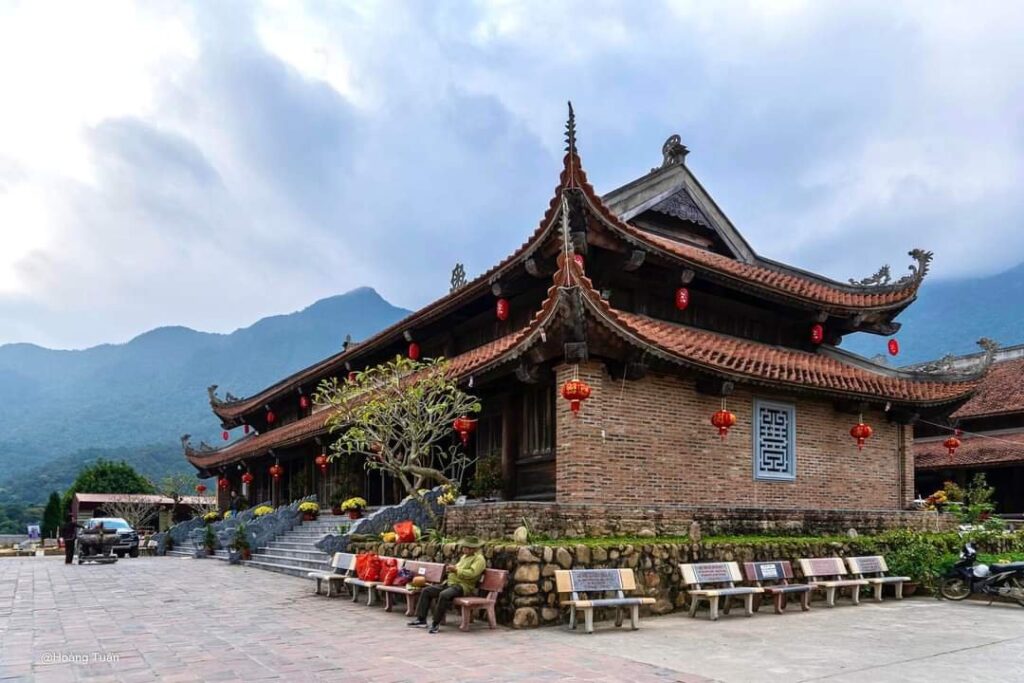
Tay Yen Tu tourist area started construction in 2014 and put into operation in phase I in 2019. The tourist area is located next to Tay Yen Tu nature reserve with thousands of hectares of primeval forest and many species of wild animals. This is an advantage in bringing tourists from all over the country different experiences during their visit and pilgrimage to the land of Buddha. The overall planning of the tourist area is divided into 02 functional zones: the eco-spiritual sightseeing zone and the eco-resort-entertainment zone. The eco-spiritual sightseeing zone includes main items such as: central square, five-element garden, infinity hill – a system of 10 statues recreating the journey of the Buddha’s life, cable car route, Ha pagoda and Thuong pagoda. In addition, in this zone there are also a number of other service facilities such as parking lots, regulating lakes, restaurants by the stream, etc.
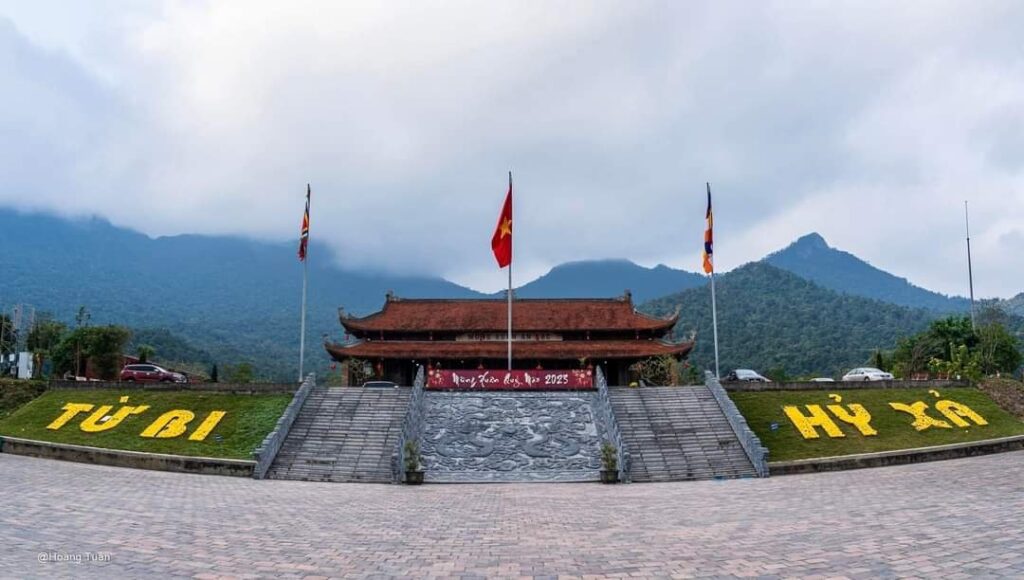
The tour of the tourist area will begin at the central square area. The prominent and symbolic work of the tourist area is the work that recreates the Imperial Citadel of Thang Long under the Tran Dynasty. This work was built according to the model design of the Imperial Citadel of Thang Long in Hanoi, including 3 floors: the 1st floor is the area for organizing exhibitions and displays; the 2nd floor is the working and reception area of the Tourist Area Management Board; the 3rd floor is the sightseeing and photography yard. Standing on the 3rd floor, visitors can have a panoramic view of the entire square in front along with the garden of the four elements (4 elements that make up matter in the Buddhist perspective: earth, water, wind, fire) and the large Buddhist Mandala symbol in the square behind and the footprints of Buddha. Next to the central square area is the infinity hill and 10 statues depicting the life journey of the Buddhist King Tran Nhan Tong. The reason it is called the infinity hill is because on this grassy hill is an infinity circle with no beginning or end. According to the Buddhist spirit, the infinity circle represents the continuous rotation of humans between emotions of joy-anger-love-hate, between thoughts and worries about life without a way out. And the Buddha King Tran Nhan Tong, before he became a monk, was not outside this infinity circle. From the infinity circle, visitors follow the green stone path to visit 10 large statues depicting the life of the Buddha King Tran Nhan Tong from birth to his coronation, then becoming a monk in Yen Tu to practice and become a Buddha here. Through these statues, visitors will once again learn about the heroic historical milestones of the nation during the resistance war against the Northern invaders, and at the same time learn fully, concisely and succinctly about the journey of practicing and founding the Truc Lam Yen Tu Zen sect of the Buddha King Tran Nhan Tong.
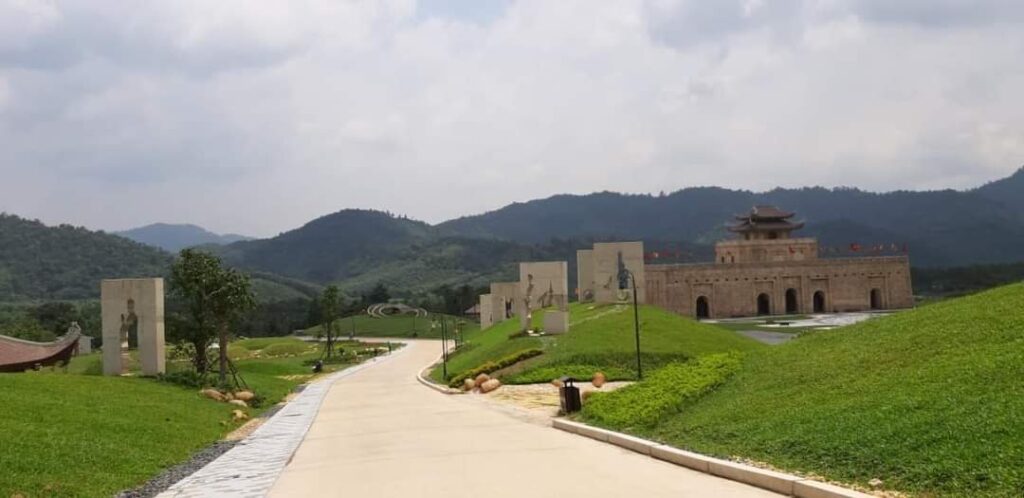
After finishing the tour of the central square and the infinity hill, visitors take the tram to visit Ha Pagoda. Ha Pagoda is called Phat Quang Thien Tu, from the outside in order: Tam Quan gate, temple yard, worshiping hall, incense burning hall, main hall, ancestral house, etc. and the highlight is the Hoa Nghiem bell tower 36m high, total area 8,000m2, designed to simulate a lotus blooming in the middle of a lake, representing the purity and clarity in Buddhist teachings. Standing in the Ha Pagoda area, visitors can have a panoramic view of Tay Yen Tu town, the scenic bridge area, the cable car station and the cable car line running to the top of the mountain. On clear days, visitors can see Dong Pagoda located on the highest peak of Yen Tu range.
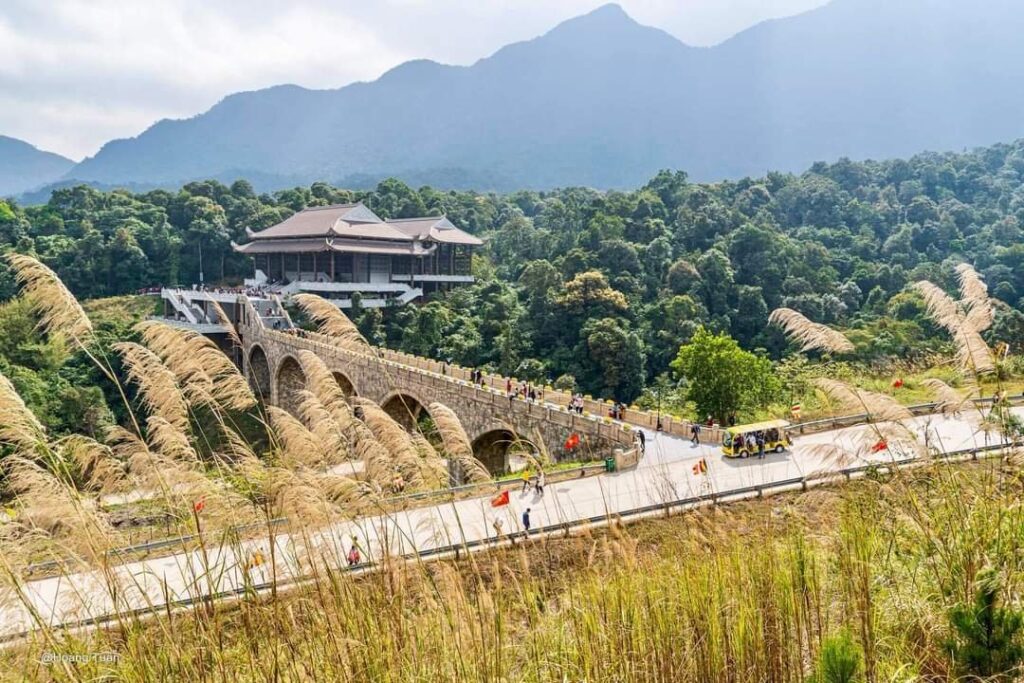
Next, walk across the scenic bridge over the Nuoc Trong stream to the departure station of the cable car line. Unlike Dong Yen Tu (Quang Ninh), when going from Tay Yen Tu, visitors only need to take a single cable car to reach the top of the mountain. The cable car line of Tay Yen Tu is 2.1km long with a system of 45 cabins serving tourists. During the journey from the foot of the mountain, visitors can fully admire the landscape of Tay Yen Tu Nature Reserve.
Upon reaching the top of the mountain, visitors will have a completely different feeling because the air on the mountain is extremely cool and fresh, along with the majestic mountain and forest landscape. From the cable car station, walk about 200m along the stone steps to reach the gate of Thuong Pagoda (also known as Linh Thong Thien Tu). The gate of Thuong Pagoda has 2 floors, the upper floor is the bell tower. From the gate, follow the paths on both sides to go up to the main hall. The main hall of Thuong Pagoda was built in the shape of the letter Dinh, mostly made of wood and roofed with lotus tiles. The foggy, cloudy weather has given Thuong Pagoda an ancient, quiet and peaceful look. In the main hall of Thuong Pagoda, outside is the altar of Tam Bao, Duc Ong, Duc Thanh Hien and 2 Dharma Protectors. Inside is the altar of the first 3 patriarchs of Truc Lam Zen: Buddha King Tran Nhan Tong, Venerable Phap Loa and Venerable Huyen Quang. After burning incense to worship Buddha, visitors can rest in front of the pagoda yard, admiring the majestic natural scenery of Yen Tu mountain forest. From Thuong Pagoda, follow the stone steps through the quiet bamboo forest to reach Dong Pagoda on the sacred Yen Tu mountain peak, 1,068 meters above sea level. On clear, sunny days, visitors can see the entire area of Ha Long city, Quang Ninh province and the estuary area. On colder days, at the foot of the mountain are valleys of floating clouds, magical like in a fairyland, etc./.
Bac Giang Portal – bacgiang.gov.vn

